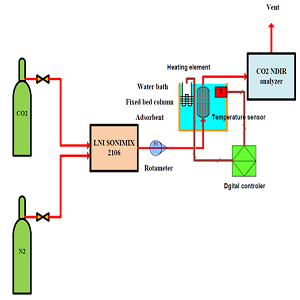
Alireza Noorpoor
University of Tehran, Iran
Title: Development of an experimental model for assessing CO2 working capacity of the combined cycle power plant on mesoporous graphene oxide-TiO2 nanocomposite
Biography
Biography: Alireza Noorpoor
Abstract
Recently a group of solid adsorbent known as the graphene-based adsorbents has been developed by the scholars to reduce the adsorbent cost and enhance CO2 capture. As a result of the unique combination of graphene's chemical, mechanical, structural and thermal properties, these adsorbents have some advantages in comparison with other adsorbents. Determination of pure CO2 capacity on graphene-based adsorbents has been the main target of the researches. Therefore, there is a literature gap to estimate CO2 adsorption capacity on these adsorbents in the binary or multi gas system which has different CO2 partial pressures similar to CO2 concentration in the flue gas of thermal power plants especially combined cycle power plants. In this study, an experimental model for calculation CO2 working capacity on mesoporous graphene oxide-TiO2 nanocomposite has been developed by response surface methodology based on the results of the breakthrough experiments (Figure 1 and 2) with respect to CO2 concentration in the flue gas of combined cycle power plants (including, 3.109, 4.352 and 5.102% vol) and different temperatures (including, 25, 60, 95oC) and various flow rates of feed gas (including, 20, 40 and 60 ml/min). CO2 working capacity as the function of the above parameters has been illustrated as follows: CO2 capacity=0.27644+ 0.06429 C-0.08541 T 0.02464 C2+0.02378 F2-0.01966 C×T-0.04669 T×F. Increase of CO2 concentration and the gas flow rate have the positive implication on CO2 working capacity. On the other hand, the gas temperature has the negative effect on CO2 adsorption as a result of exothermic behavior of CO2 capture. Furthermore, this parameter has the most negative effect on the experimental model of CO2 working capacity. The interaction of the parameters including C×T and T×F has the negative implication on CO2 working capacity.

Figure 1: Experimental set-up for assessing CO2 working capacity.

Figure 2: Breakthrough experiments for assessing CO2 working capacity.

